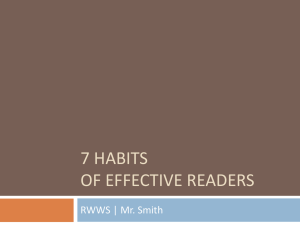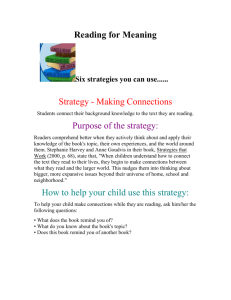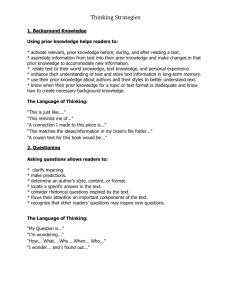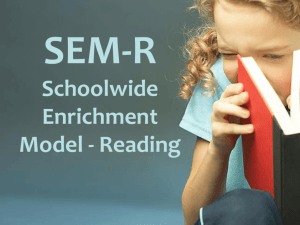Reading Strategies - Elizabethtown Area School District
advertisement
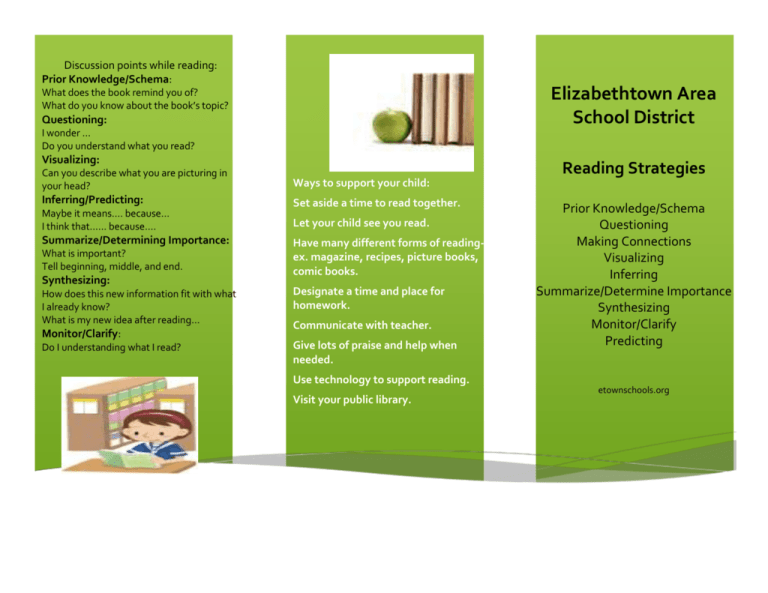
Discussion points while reading: Prior Knowledge/Schema: Elizabethtown Area School District What does the book remind you of? What do you know about the book’s topic? Questioning: I wonder … Do you understand what you read? Visualizing: Can you describe what you are picturing in your head? Ways to support your child: Inferring/Predicting: Set aside a time to read together. Maybe it means…. because… I think that…… because…. Summarize/Determining Importance: What is important? Tell beginning, middle, and end. Synthesizing: How does this new information fit with what I already know? What is my new idea after reading... Monitor/Clarify: Do I understanding what I read? Let your child see you read. Have many different forms of readingex. magazine, recipes, picture books, comic books. Designate a time and place for homework. Communicate with teacher. Give lots of praise and help when needed. Use technology to support reading. Visit your public library. Reading Strategies Prior Knowledge/Schema Questioning Making Connections Visualizing Inferring Summarize/Determine Importance Synthesizing Monitor/Clarify Predicting etownschools.org Reading Comprehension By: Diane Henry Leipzig Reading is a multifaceted process involving word recognition, comprehension, fluency, and motivation. Learn how readers integrate these facets to make meaning from print. Reading is making meaning from print. It requires that we: Identify the words in print – a process called word recognition Construct an understanding from them – a process called comprehension Coordinate identifying words and making meaning so that reading is automatic and accurate – an achievement called fluency Prior Knowledge/Schema Readers activate what they currently understand or misunderstand about the topic and use this knowledge before, during, and after reading to clarify misconceptions and understand the text. is literally stated. Questioning Summarizing/Determine Importance Readers ask questions about the text and the author’s intentions and seek information to clarify and extend their thinking before, during and after reading. Synthesizing Reading Strategies Making Connections Readers relate what they read to personal experiences (text-to-self), to information from other text (text-totext), and to information about the world (text-to-world) in order to enhance understanding of self, text, and life. Visualizing Readers create images in their minds that reflect or represent the ideas in the text. These images may include any of the five senses and serve to enhance understanding of the text. Inferring Readers think about and search the text, and sometimes use personal knowledge to construct meaning beyond what Readers identify key elements and condense important information into their own words during and after reading to solidify meaning. Readers create original insights, perspectives and understandings by reflecting on text(s) and merging elements from text and existing schema. Monitor/Clarify Readers monitor their comprehension to know when they understand what they read and when they do not. They have strategies to "fix" problems in their understanding as the problems arise. Predicting Using prior knowledge and evidence in the text, readers make predictions about what is going to happen next, or what ideas or evidence the author will present to support an argument.
